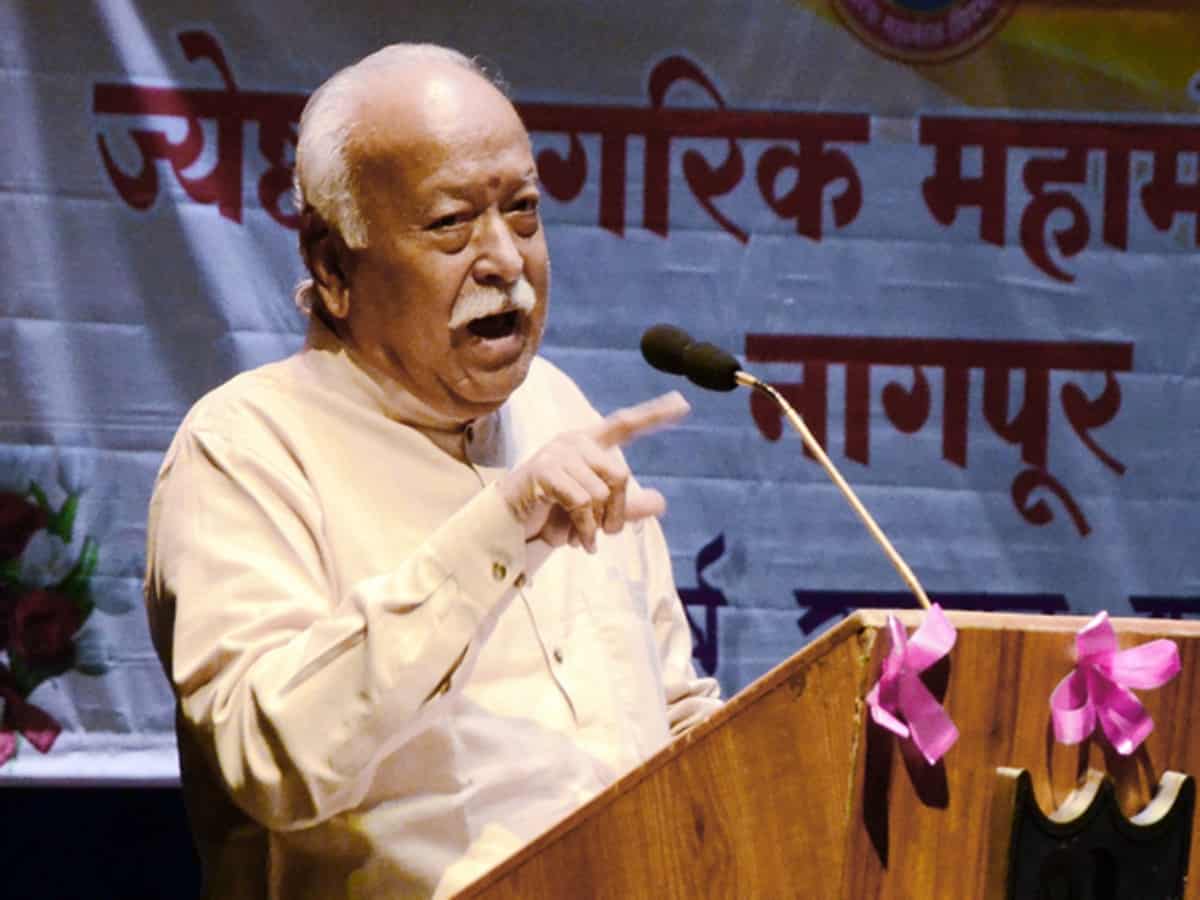
New Delhi: The “entry” of Ram Lalla in his birth place in Ayodhya and the temple’s ‘Pran Pratishtha’ ceremony will be the beginning of the campaign for “reconstruction of Bharatvarsh” which is for harmony, unity, progress, peace, and well-being of everyone, RSS chief Mohan Bhagwat said on Sunday.
In an article posted on the Rashtriya Swayamsevak Sangh’s (RSS) website, Bhagwat referred to the “continuous struggle of the Hindu society” for the construction of the temple in Ayodhya and said the “conflict and bitterness” over the dispute should now come to an end.
After years of legal struggle, the Supreme Court pronounced a “balanced” verdict on November 9, 2019, after examining “the truth and facts” and also hearing the arguments of all the parties in the case, he said.
Lord Ram is ‘most worshipped deity’: Bhagwat
Bhagwat said from a “Dharmic” point of view, Lord Ram is the “most worshipped deity” of the majority society in the country and is still accepted as an ideal of conduct by the entire society.
“Hence, now the conflict that has arisen as for and against over the dispute should be ended. The bitterness that has arisen in the meantime should also end. The enlightened people of the society must see that the dispute ends completely,” he said.
“Ayodhya means a city where there is no war, a place free from conflict. On this occasion, in the entire country, reconstruction of Ayodhya is the need of the hour and also the duty of all of us,” Bhagwat said.
The RSS chief said the occasion of the construction of the Ram temple in Ayodhya marks the “reawakening of national pride”.
On ‘Bharatvarsh’
This also signifies the “acceptance of the vision of life behind the character of Shri Ram by the modern Bharatiya society”, he added.
The ‘pran pratishtha’ (consecration) ceremony will be held at the Ram temple on January 22 and will be attended by Prime Minister Narendra Modi, Uttar Pradesh Chief Minister Yogi Adityanath, Bhagawat and more than 7,000 people, including seers.
“This world is (in a) destructive frenzy due to egoism, selfishness, and discrimination and is bringing infinite calamities upon itself. The entry of Shri Ram Lalla in Ram Janmabhoomi and his Pran Pratishtha is the beginning of the campaign for the reconstruction of Bharatvarsh which is for the well-being of all, accepting all without enmity and showing the path of harmony, unity, progress, and peace,” Bhagwat said.
“We are the active followers and implementers of that campaign. In the devotional celebration of January 22, along with the reconstruction of the temple, all of us have resolved for the reconstruction of Bharat and through it paving the way for reconstruction of the entire world,” he said.
“Keeping this guiding light in mind, moving forward is the need of the hour,” he added.
The RSS chief said the history of Bharat is the history of “continuous struggle against the invaders for around the last one and a half thousand years”.
On ‘invasions’
He said the aim of early invasions was to plunder and sometimes, like Alexander’s invasion, it was for colonisation.
“But the attacks from the West in the name of Islam only brought complete destruction and alienation of the society. To demoralise the nation, and society, it was necessary to destroy their religious places. Hence, foreign invaders also destroyed temples in India. They did this multiple times,” he said.
They aimed to “demoralise the Bharatiya society” so that they could rule over Bharat “unhindered with the weakened society”, Bhagwat said.
“The demolition of Shri Ram temple in Ayodhya was also done with the same intention and for the same purpose. This policy of the invaders was not limited to just Ayodhya or any one temple, but was a war strategy for the entire world,” he added.
The RSS chief said the faith, commitment, and morale of the society in Bharat never diminished.
“The society did not bow down, their struggle of resistance continued. Therefore, repeated attempts were made to take control of the birthplace (of Lord Ram) and build a temple there (in Ayodhya). There were many wars, struggles, and sacrifices for him. And the issue of Ram Janmabhoomi ingrained in the minds of Hindus,” he added.
Turning the pages of history, Bhagwat said that in 1857, when war plans started being made against the British rule, Hindus and Muslims “together expressed their readiness” to fight against them and then there was a mutual exchange of ideas between them.
At that time, a situation evolved where there would be a reconciliation on the issue of banning cow slaughter and the liberation of Shri Ram Janmabhoomi. “Bahadur Shah Zafar also guaranteed a ban on cow slaughter,” he said.
“As a result, the entire society fought together. Bharatiya people showed bravery in that war but unfortunately this war of Independence failed. Then, Bharat did not get independence, British rule remained uninterrupted, but the struggle for Ram temple did not stop,” he added.
(Except for the headline, this story has not been edited by Siasat staff and is published from a syndicated feed.)



